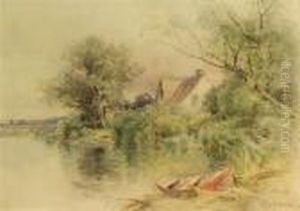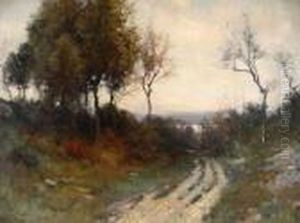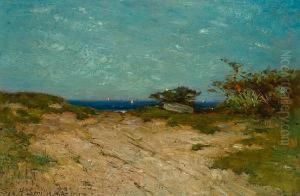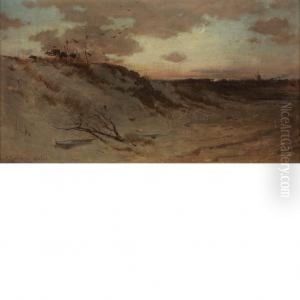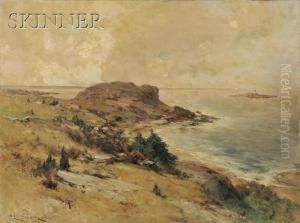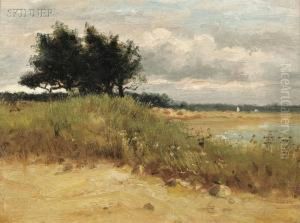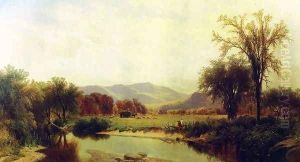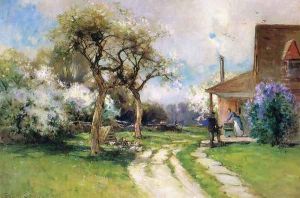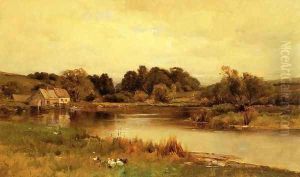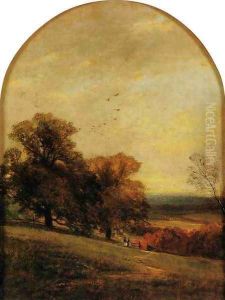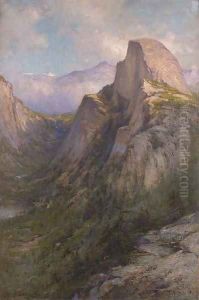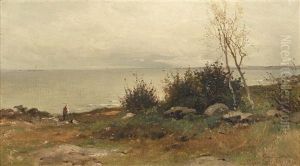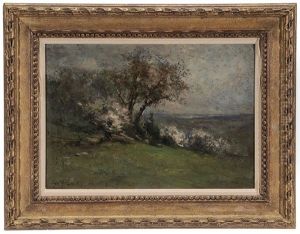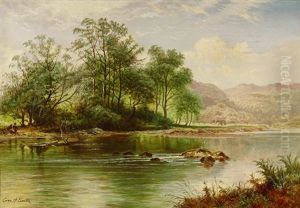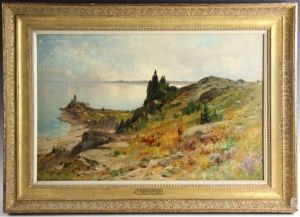George Henry Smillie Paintings
George Henry Smillie was a prominent American landscape painter, born in New York City on September 29, 1840. He was part of a family deeply rooted in the arts; his father, James H. Smillie, was a noted engraver and his brother, James D. Smillie, was also an artist. George showed an early interest in art and studied under James M. Hart, who was a member of the Hudson River School, a group of painters known for their romantic portrayal of the American landscape.
George Smillie's work was heavily influenced by the Hudson River School tradition. He excelled in depicting serene pastoral scenes and was particularly skilled in capturing the changing moods of nature. His landscapes often featured tranquil bodies of water, bucolic meadows, and gentle lighting that conveyed a sense of peacefulness and timeless beauty.
Throughout his career, Smillie enjoyed considerable success and was a member of various art institutions, including the National Academy of Design where he was elected an Associate in 1864 and became a full Academician in 1876. He was also a member of the American Watercolor Society and the New York Etching Club, among others.
In addition to painting, Smillie contributed to the art community as a teacher. He shared his knowledge and skills with a number of students, helping to inspire the next generation of American landscape painters.
George Henry Smillie's works were widely exhibited during his lifetime, including at the National Academy of Design and the Boston Art Club. His paintings are now held in numerous collections and museums, testament to his enduring legacy as a master of American landscape art.
Smillie continued to paint and contribute to the art world until his death on February 24, 1921. His body of work remains a significant part of American art history, offering insight into the 19th century's appreciation for the natural world and its landscapes.

